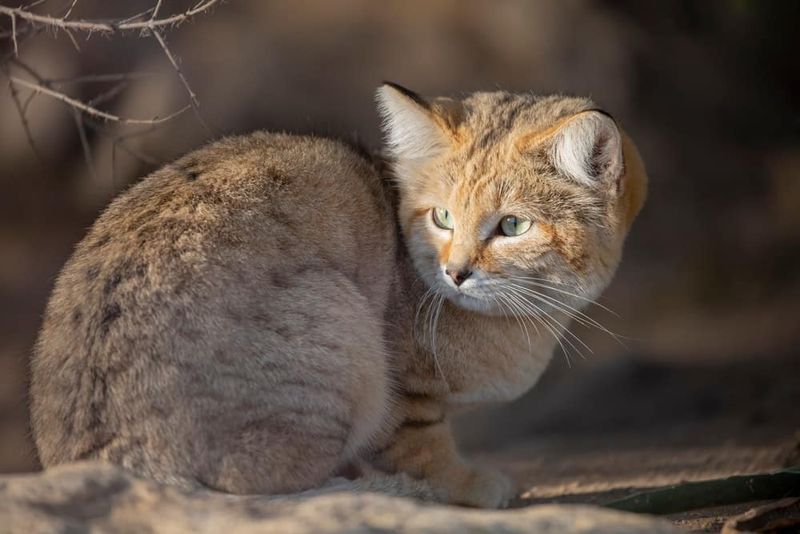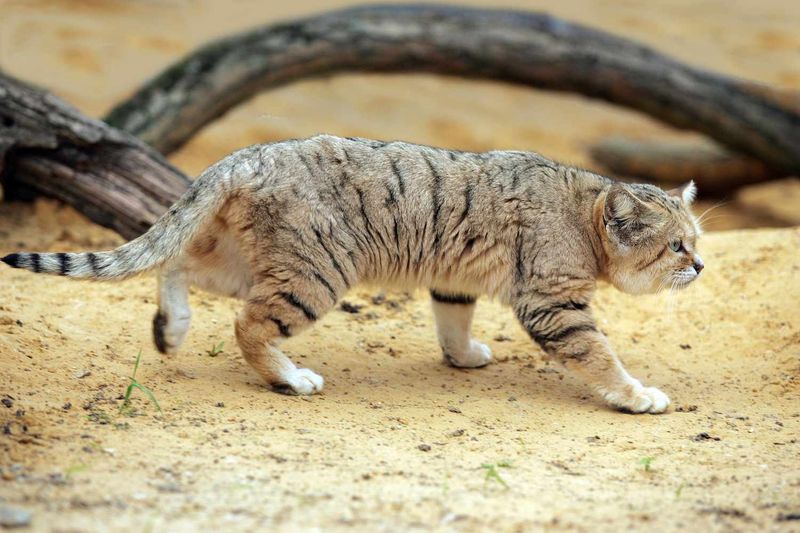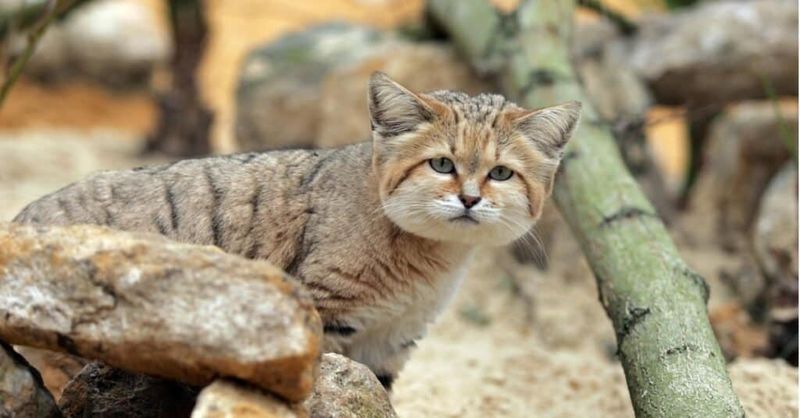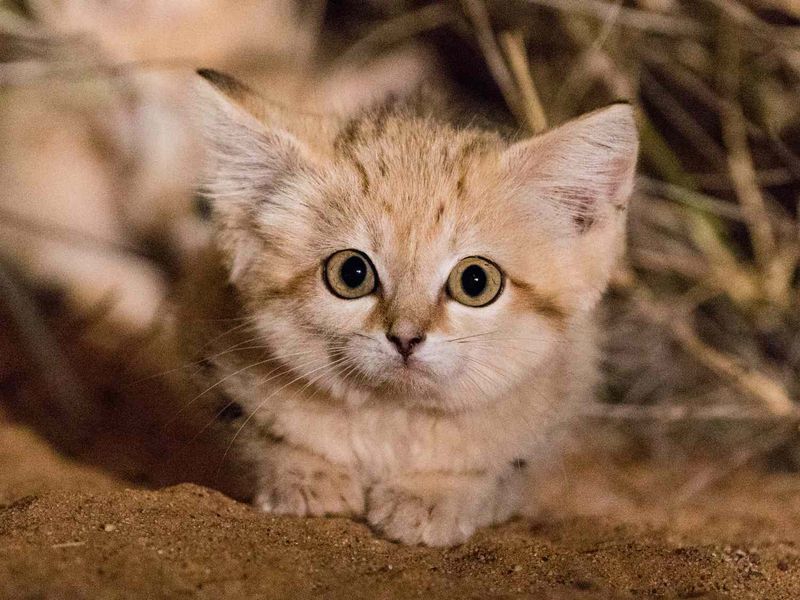📖 Table of Content:
In the world’s most unforgiving deserts, a remarkable feline thrives by mastering the art of deception. The sand cat, with its small size and endearing appearance, might seem like an ordinary house kitten at first glance. However, beneath its cute exterior lies a creature perfectly adapted to one of the harshest environments on Earth.
This elusive wild cat has evolved a set of specialized traits that allow it to survive where few other animals can. From its thick fur to its ability to hunt in extreme heat, the sand cat’s survival skills are truly impressive. Even larger carnivores would be amazed by its hunting prowess and ability to navigate the desert with ease.
The sand cat’s ability to thrive in such a challenging habitat deserves both attention and admiration. Its unique adaptations showcase the incredible diversity of life and nature’s ability to craft creatures suited to the most extreme conditions. This small but mighty predator is a testament to the resilience of wildlife.
1. Built for Harsh Environments
Sand cats thrive where few mammals dare to live. Their furry paws act as natural snowshoes for the desert, protecting them from scorching hot sand while leaving minimal tracks as they move – a critical advantage for both hunting and avoiding larger predators.
These remarkable felines can survive in temperatures ranging from freezing desert nights to blistering 126°F (52°C) days. They don’t even need to drink water directly, obtaining most of their moisture from the prey they consume.
Found across North Africa, the Middle East, and Central Asia, sand cats have specialized kidneys that efficiently concentrate urine, allowing them to conserve precious water in their arid habitats.
2. Deadly Hunters with Kitten Faces
Behind those innocent-looking eyes lies a ruthless hunter. Sand cats can hear prey moving underground, using their exceptional hearing to locate rodents, lizards, and insects beneath the sand before pouncing with deadly precision.
Unlike domestic cats, sand cats often bury excess food for later consumption – a smart strategy in environments where meals are unpredictable. They’re particularly skilled at catching venomous snakes, having evolved resistance to certain snake venoms.
Their hunting success rate rivals that of much larger predators. A sand cat can travel up to 10 miles nightly in search of prey, maintaining a territory of approximately 16 square miles in the wild.
3. Masters of Camouflage and Stealth
Sand-colored fur provides these cats with natural desert camouflage that would make military designers jealous. Their sandy coats feature subtle patterns that break up their outline against desert backgrounds, making them virtually invisible to both prey and potential threats.
When threatened, sand cats don’t run – they freeze and press their bodies flat against the ground, becoming nearly impossible to spot. Their tracks disappear quickly in shifting sands, adding to their phantom-like presence.
Sand cats are so elusive that researchers often struggle to study them in the wild. Many wildlife photographers spend years attempting to document these ghosts of the desert without success.
4. Specialized Desert Communication
Sand cats have developed unique vocalizations different from other felines. Their barking call, similar to a small dog, carries across desert expanses and helps maintain territory boundaries without revealing exact locations to predators.
During breeding season, males produce a loud, distinctive mating call that can travel over a mile across open desert terrain. These calls contain complex information about the cat’s fitness and territory quality.
Beyond vocals, sand cats communicate through scent marking using specialized glands. They create invisible “signposts” around their territory that can last for weeks in the dry desert air, allowing them to navigate their vast hunting grounds efficiently.
5. Solitary Survivors Against All Odds
Fiercely independent, sand cats typically interact with others only during brief mating periods. Unlike many desert animals, they don’t form colonies or family groups, preferring to tackle survival challenges alone.
A mother sand cat raises her kittens (usually 2-4 per litter) in isolated burrows, teaching them hunting skills before they disperse at just 3-4 months old. This early independence contributes to their remarkable survival skills.
Research suggests sand cats can live up to 13 years in captivity but typically survive 5-7 years in the wild. Their population faces threats from habitat loss, vehicle collisions, and capture for the exotic pet trade, making conservation efforts increasingly important.
6. Ancient Desert Dwellers with History
Archaeological evidence suggests sand cats have inhabited desert regions for at least 10,000 years. Ancient Egyptian art features small desert cats resembling modern sand cats, indicating possible cultural significance to early desert civilizations.
These resilient felines have survived multiple climate shifts across their range. Genetic studies reveal they’ve maintained remarkable genetic diversity despite harsh living conditions and population challenges.
Sand cats were first scientifically described in 1858 by French naturalist Victor Loche after an expedition to the Sahara Desert. However, local desert cultures had deep knowledge of these animals for centuries, often regarding them with respect for their survival abilities.
7. Not Your Average House Cat
Despite their cuddly appearance, sand cats make terrible pets. Their specialized needs include extreme temperature variations, specific humidity levels, and hunting opportunities that typical homes cannot provide.
Their wild instincts remain strong even in captivity. Many zoos report that sand cats maintain their secretive nature, often hiding from visitors and showing stress behaviors when unable to perform natural behaviors like digging and hunting.
Conservation programs now focus on protecting wild populations rather than breeding them for captivity. Several wildlife organizations monitor sand cat populations using non-invasive techniques like camera traps and collecting genetic material from tracks, helping us better understand these fascinating desert specialists.







